We have our pet authors and Eve Bunting is one of them. We have enjoyed Fly Away Home, The Memory String, Gleam & Glow, Pop’s Bridge, Smoky Night and Whales Passing. One Green Apple is about Farah, a Muslim girl who is new to America. Her headscarf and inability to speak English set her apart from her classmates, some of whom are friendly and some of whom have mentioned her home country in less than friendly terms. Her father has told her, “Our home country and our new one have had difficulties.” We are not told where Farah is from, but I suspect it must be Pakistan or Afghanistan from the word “dupatta” that the author uses for the shawl she wears.
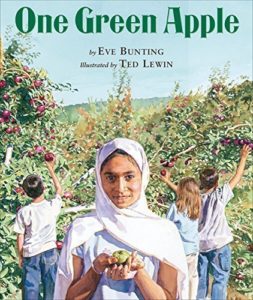 On this day, Farah and her classmates are visiting a farm. She enjoys the sights and smells but is very anxious and feels “tight inside”. When she goes to pick an apple, she chooses a small green one that fits right in her hand. Farah likes it even though the others choose the sweet, red ones … it is different, like her. When they make the cider, her classmates protest as she adds this green apple into the vat of ripe red ones.
On this day, Farah and her classmates are visiting a farm. She enjoys the sights and smells but is very anxious and feels “tight inside”. When she goes to pick an apple, she chooses a small green one that fits right in her hand. Farah likes it even though the others choose the sweet, red ones … it is different, like her. When they make the cider, her classmates protest as she adds this green apple into the vat of ripe red ones.
The barriers begin to break, tentatively, but surely. At first, a friendly girl, Anna, reaches out and then she joins in making apple cider by helping to operate the press. On the way back, she enjoys a lighthearted moment with her new friends. She finally has the courage to say her first “outside myself” word – “App-ell” and her friends applaud her.
Eve Bunting’s subtle storytelling makes this story a joy. What wonderful message – that we really do have a lot in common and that our differences add colour and flavour to the world. I just adore the illustrations – Ted Lewin… need I say more? I cannot gush enough about his winning work! In One Green Apple, his pictures are gloriously sun-drenched and so full of hope! I think many of us can relate to Farah’s fears and awkwardness – I cannot help but beam along with her when she eventually flashes a confident, triumphant smile.
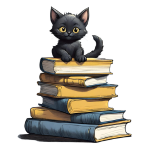
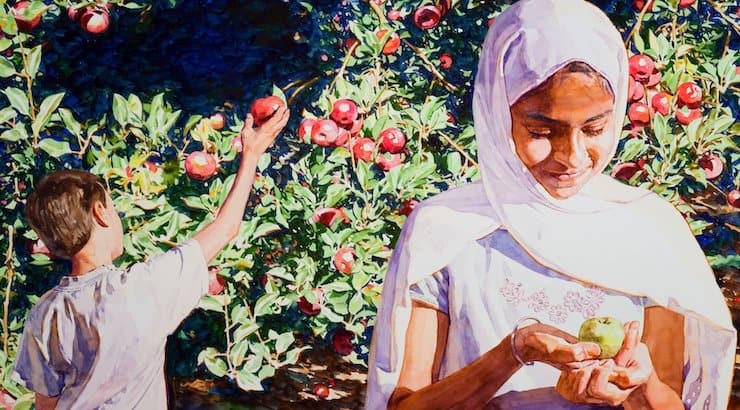

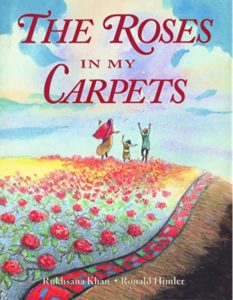 I personally love this book – Ronald Himmler’s illustrations are always beautiful and in this case, he has sensitively captured the grief and quiet dignity of the family. [You might recognize his work in Sadako and the Thousand Paper Cranes, Rudy’s Pond, Fly Away Home and The Well.] The contrast between the muddy walls and vibrant carpets bring home the themes of strife and hope.
I personally love this book – Ronald Himmler’s illustrations are always beautiful and in this case, he has sensitively captured the grief and quiet dignity of the family. [You might recognize his work in Sadako and the Thousand Paper Cranes, Rudy’s Pond, Fly Away Home and The Well.] The contrast between the muddy walls and vibrant carpets bring home the themes of strife and hope.
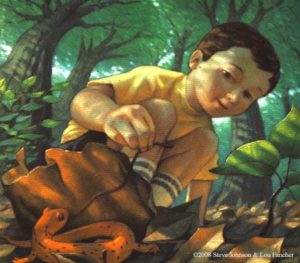 The Salamander Room is a wonderful example of how a living book can be a springboard to nature studies and science. Your little one will be introduced to topics like cause and effect, habitats, amphibians, rainforests, ecology and how we can do our bit to care for the environment.
The Salamander Room is a wonderful example of how a living book can be a springboard to nature studies and science. Your little one will be introduced to topics like cause and effect, habitats, amphibians, rainforests, ecology and how we can do our bit to care for the environment.
